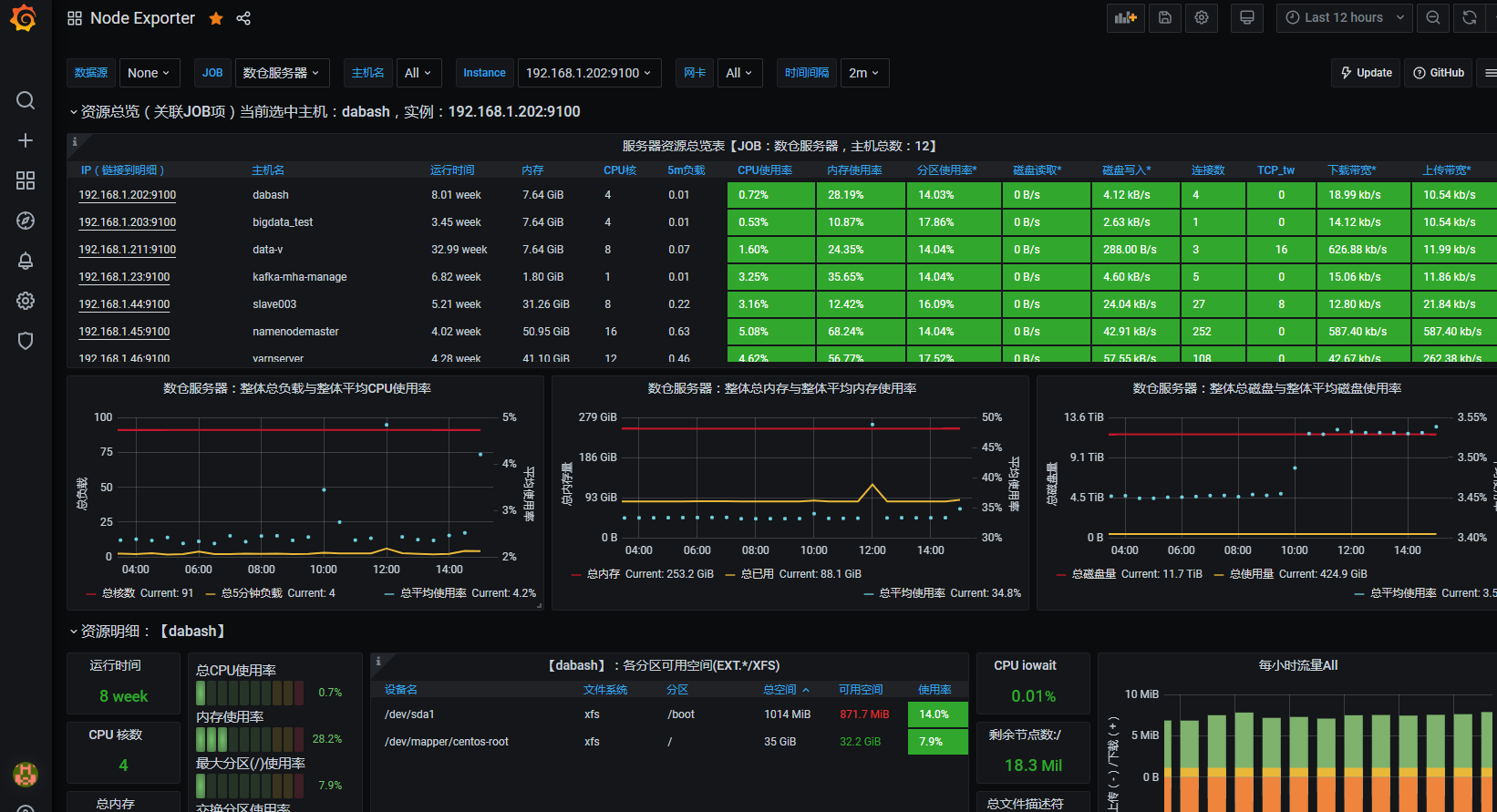
- #GRAFANA NODE EXPORTER HOW TO#
- #GRAFANA NODE EXPORTER INSTALL#
- #GRAFANA NODE EXPORTER DOWNLOAD#
- #GRAFANA NODE EXPORTER FREE#
You can run this playbook file via the below command: ansible-playbook -i inventory.txt playbook.yml ``` % ansible-playbook -i inventory.txt playbook.yml /usr/local/Cellar/ansible/5.7.1/libexec/lib/python3.10/site-packages/paramiko/transport.py:236: CryptographyDeprecationWarning: Blowfish has been deprecated "class": algorithms.
#GRAFANA NODE EXPORTER INSTALL#
Then we can set some defaults variables in the default directory : node_exporter_version: "1.1.2" node_exporter_bin: /usr/local/bin/node_exporter node_exporter_user: node-exporter node_exporter_group: "" register: _command_admin changed_when: _command_admin.rc !=0ĭon’t forget to set your Admin password for start and you can set it in default directory: grafana_admin_password: "abc1234" Step 5: Create Ansible PlaybookĬreate an Ansible playbook file like the below : - name: install monitoring stack hosts: monitorserver become: yes roles: - prometheus - grafana - name: install node-exporter hosts: nodeservers become: yes roles: - node-exporter Step 6: Testing First and foremost, the ansible-galaxy command aids in the construction of a role’s skeleton: ansible-galaxy init roles/node-exporter To install a binary or a tarball with an IaC or configuration manager such as ansible, you must first master a basic case. Step 2: Create a role to install node-exporter

Note: Don’t forget the change the IP addresses of the target nodes and the path of your pem key. Export any dashboard from Grafana 3.1 or greater and share your creations with the community. db_server ansible_host= ansible_user=ec2-user ansible_ssh_private_key_file=~/ server1 ansible_host= ansible_user=ec2-user ansible_ssh_private_key_file=~/ server2 ansible_host= ansible_user=ec2-user ansible_ssh_private_key_file=~/ Paste the content below into the inventory.txt file.
#GRAFANA NODE EXPORTER DOWNLOAD#
a Download the node-cert exporter To download the node-cert exporter, run a simple wget command. It is highly recommended to store your SSL certificates in the /etc/ssl folder, but you may store them in different places. $ mkdir dynamic-inventory $ cd dynamic-inventoryĬreate a file named inventory.txt $ sudo vi inventory.txt The node-cert exporter is an exporter that will periodically check your SSL certificates given a set of filesystem paths. So, make a directory named g rafana-prometheus under the home directory and switch to it.ANSIBLE_CONFIG (environment variable if set) ansible.cfg (in the current directory) ~/.ansible.cfg (in the home directory) /etc/ansible/ansible.cfg

Note: Remember that Ansible will process the below list and use the first file found, all others are ignored. As a best practice, I prefer to create a new folder for each project and create a config file in it.

The list of metrics is extensive.Step 1: Set with static inventory file and Pinging the Target Nodes On the next screen select a name for your dashboard and select Prometheus as the datasource for it and click Import. In the dashboard input, add the dashboard ID we want to use: 1860 and click Load You’ll only be running these for a little while, so don’t worry too much about cost. So select 2 of the $40 , 8GB, 4vCPU machines. You can also spin up clusters using tools like minikube, microk8s, or even using kubeadm to create your own cluster.įor this tutorial you might need slightly beefier nodes.
#GRAFANA NODE EXPORTER FREE#
The above is a referral link with $50 free usage :) You can sign up for Kubernetes using this link They already have all the networking and storage configured and all you have to do is create and download your kubeconfig There are a multitude of ways for getting a Kubernetes cluster setup, but I find the easiest just to use a DigitalOcean managed cluster.
#GRAFANA NODE EXPORTER HOW TO#
In this article I will show how to add monitoring for all the nodes in your cluster.īy the end of this tutorial, you'll have a dashboard that looks like Prometheus and Grafana make it extremely easy to monitor just about any metric in your Kubernetes cluster. Monitoring a cluster is absolutely vital.


 0 kommentar(er)
0 kommentar(er)
